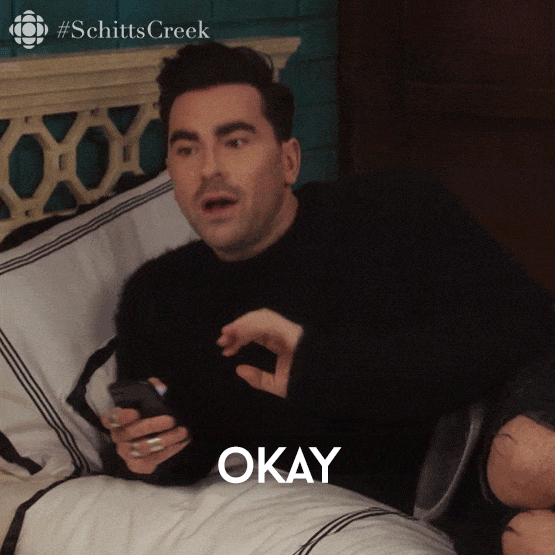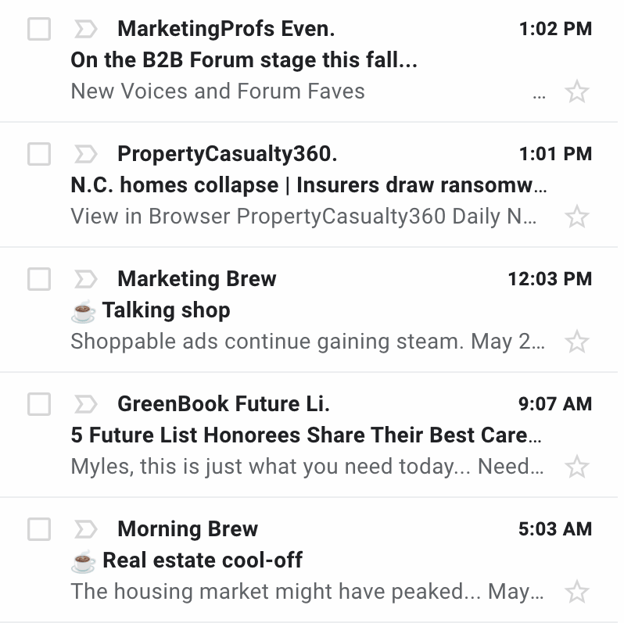5 Content Marketing Tips to Help English Majors Make the Leap from Classroom to Office

English majors, take note: learning how to write doesn’t stop after college.
I know firsthand.
If you, like me, want to leverage your English degree for a lucrative career in content marketing, you can’t think like an academic (or a poet, or a novelist). You have to think like a content marketer.
Writing quality marketing content that performs well is a marathon, not a sprint. But these five tips can give you a head start.
Tip 1: Outlines Matter
Remember when your seventh grade English teacher taught you how to outline a paper?
For me, that lesson went in one ear and out the other.
From grade school through college, I relied on this tried-and-true process:
- Write a thesis statement. These typically followed an “In this paper, I will…” formula.
- Jot down “body arguments.” By which I mean a few tiny sentence fragments.
- Just… sit there and stare into space. I’d think through my entire argument. Maybe while sipping coffee on a long walk.
- Write the paper straight through, proofread, and submit. Piece of cake!
At the University of Chicago, these four steps got me the grades I wanted (most of the time). But when I became a content marketer, I realized two things: my writing process was incredibly inefficient and it risked hurting my final product.

Figure 1: Chicago’s skyline, as captured while I was “outlining” a college paper
When you don’t have an outline…
- You can’t build out ideas in a low-stakes way.
- It’s easy to miss gaps in thinking until you’ve committed lots of time to them.
- It’s harder for an editor or manager to assess your ideas (and takes longer to adjust them).
As a content marketer, both efficiency and your final product matter. That’s why outlines matter, too.
Content marketing teams are well-oiled machines. When you write outlines, you can boost your efficiency to meet internal and / or client deadlines.
Outlining also helps you deliver the best possible content. In college, your final paper grade only affects you. But when you’re a content marketer, the work you produce could affect the bottom line for months or years to come.
Tip 2: Headings (Like This One) Really Matter
When I wrote English papers, I never used headings.
In fact, I was taught that the best papers didn’t need headings at all.
Unless I was writing a journal-length article, my ideas were supposed to flow from topic sentence to topic sentence. If the main takeaways weren’t clear, that was a writing problem, not a structural one.
But here’s the thing: a “no headings” approach only works if you assume your reader actually reads every word you’ve written.
In the business world, that’s rarely the case.
If you want to be a content marketer, you have to assume the opposite: business readers will skim.
They’re skimming on their lunch break or commute.
They’re skimming while muted on a Zoom call.
And unlike your professors, business readers aren’t captive audiences. They want to grab high-level takeaways in seconds. They’ll move on to the next article if they can’t.
With a few crisp headings (“H2s” in SEO lingo), you can optimize for skimmers and give your readers what they want.
Next time you’re reading a blog post, skim the title and H2s. You’ll know it’s top-notch content if you can understand the bones of the argument from its headings alone.
Fun fact: my old manager used that approach to review my outlines. If the H2s weren’t clear, she’d send the outline back.
Tip 3: The Punchiest Sentence Wins
When I wrote academic papers, I loved a good, long paragraph.
My signature style: a string of chunky, indirect constructions like “To blah is to blah” and “Just as blah blahs, so too does blah blah blah.”
These sentences weren’t quite run-ons, of course. But they were needlessly jam-packed.
That style was part of a longstanding tradition in academia. With the right rhythm and word choice, indirect sentences can communicate artistry and seriousness… but at the expense of clarity.
That’s how you get paragraph-length sentences like Judith Butler’s.

Figure 2: This sentence won first prize in the 1999 Bad Writing Contest
As a content marketer, these kinds of sentences simply don’t work.
Remember: you’re writing for skimmers. Don’t expect them to wade knee-deep in every sentence to find the main point. (They won’t!)
Brevity and directness make the important stuff clear. And with the right sentence length variation, you can strike a good rhythm to keep readers engaged.
There’s another benefit, too: straightforward writing communicates respect.
Business audiences are busy. When you keep things short and sweet, you signal that you respect your readers’ time and energy.
So how do you shorten your writing? Get to the point, and get to it with punchier words.
At Propllr, Brenna has taught me the value of a well-placed colon, em dash, or question mark – they cut unnecessary words.
Another tip: break up those paragraphs. Our eyes love white space, not walls of text. For maximum impact, keep your paragraphs under five lines.
My favorite trick? Pick Germanic words over Latinate ones. They’ll help your ideas stick. And they’ll save readers from the kind of multisyllabic locution that makes eyes glaze over.

Figure 3: Translation = use more Germanic words
Tip 4: Dare to be Bold (with Formatting)
Think about the last paper you wrote. How many times did you use bold text?
In my academic writing, bold formatting was a strict no-go.
I was taught that properly fleshed out ideas don’t need to be bolded. Instead, the surrounding sentences should communicate a word or phrase’s importance.
But in content marketing (and, I’d argue, all kinds of writing), bold text actually helps your readers. It breaks up long blocks of text – and makes the important stuff pop.
In my writing, I use bold formatting to…
- Introduce important list items. Exhibit A.
- Define an important term. This is key when writing about complex or unfamiliar topics.
- Highlight essential takeaways. Another way to optimize for skimmers.
Of course, you can have too much of a good thing. Swap in italics to add emphasis without weighing down your content.
(I’d steer clear of underlining, though – your text might get mistaken for a link.)
Tip 5: To Write Good Content, Read Good Content
If there’s One Writing Rule to rule them all, it’s this: the more you read, the better you’ll write.
When I was an English major, that meant constantly reading books, poetry, journal articles, and longform journalism.
With content marketing, that rule is no different – but the things you’re reading might be.
To improve my content writing, I read a lot of marketing content. Day to day, that usually means B2B blogs (our clients have some great ones), and marketing newsletters (Animalz is a lifesaver).
I also ghostwrite a lot of contributed articles, so I’ll read pieces in relevant industry pubs and take note of language that sticks.
Figure 3: My Friday afternoon newsletter stack
As a content marketer, reading quality content can help you sharpen your writing skills and stay on top of marketing trends.
But don’t limit yourself to the written word. Look for video content and podcasts, too. With a full suite of content resources, you can make the jump from academic writer to content marketer.
It Takes a Village to Become a Content Marketer
If you’re an English major, I bet you’ve got a knack for the writing fundamentals. That means a career in content marketing is well within your grasp.
But to really learn the craft, you need a support team. I learned everything I know about content marketing from the experts here at Propllr. And I’m still learning new things every day.
Pumped about a future in content marketing? Want to hone your talent? Drop us a line – we’d love to chat.



